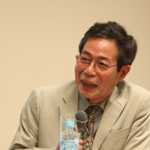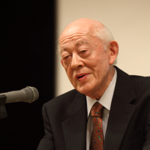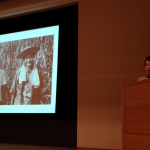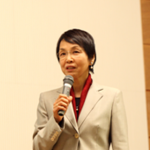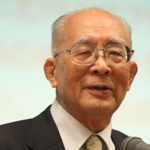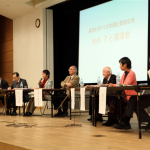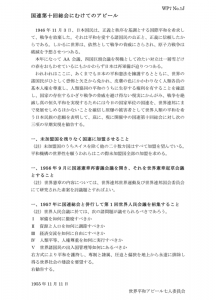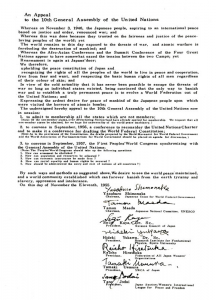February 14, 2020
Committee of Seven to Appeal for World Peace
Kinhide Mushakoji, Yoshino Oishi, Michiji Konuma, Satoru Ikeuchi, Shin’ichiro Ikebe, Kaoru Takamura, Susumu Shimazono
We, the Committee of Seven to Appeal for World Peace oppose the deployment of the low-yield nuclear warhead on the US ballistic missile nuclear submarines, because we worry about increase of the possibility of the use of nuclear weapon. We demand that the United States of America and all the other Nuclear States take the path towards the reduction and abolition of nuclear weapons.
John Rood, Under Secretary of Defense for Policy, the US Department of Defense issued the “Statement on the Fielding of the W76-2 Low-Yield Submarine Launched Ballistic Missile Warhead” on February 4, 2020. This is realization of the policy stated in the Nuclear Posture Review 2018 of the Trump Administration. This statement corresponds with the contents in the article “US Deploys New Low-Yield Nuclear Sub marine Warhead” posted on January 29, 2020 on the website of the Federation of American Scientists.
According to this article and others the 14 Strategic Nuclear Submarines possessed by the US have each 20 Ballistic Missiles with nuclear warheads W76-1 of 90 kiloton or W88 of 455 kilotons. On the Tennessee, one of these submarines stationed in a submarine base of the Atlantic Coast one or two low-yield warheads W76-2 were installed last year. It is reported that W76-2 is a reformed model of W76-1 using only the nuclear detonator excluding the hydrogen part. The Tennessee is reported to have been deployed on an operational patrol in late 2019 and to have returned to the submarine base on January 11, 2020.
The statement of the US Department of Defense acknowledges that this supplemental capacity strengthens deterrence and provides the United States a prompt, more survivable low-yield strategic weapon; supports their commitment to extended deterrence; and demonstrates to potential adversaries that there is no advantage to limited nuclear employment because the USA can credibly and decisively respond to any threat scenario. However, the submarine invisibility is much higher than any land-based missiles and any strategic nuclear bombers, and its prompt nuclear capacity implies that it can also be used for a preemptive nuclear attack. This possibility, given past errors of judgements, and given the policy of the USA to use its nuclear weapons for the first use and even against non-nuclear attacks, this new measure clearly increases the danger of using the nuclear weaponry. Even if the power of the detonation is less than the Hiroshima and Nagasaki cases, the use of any nuclear weapon covers the whole earth with radioactive materials, and open the road to the use of higher-yield nuclear weapons.
Nuclear weapons are inhumane and their use as well as their threat to use should be prohibited under any circumstances. This is the opinion of the majority of the Japanese and is also the opinion of the global civil society expressed by the victims of nuclear weapons around the world and by all the nations supporting the Treaty on the Prohibition of Nuclear Weapons. We clearly remember the recent statements against nuclear weapons in Nagasaki and in Hiroshima by Pope Francis who visited Japan last year. We cannot accept the fielding of new low-yield submarine-launched ballistic missile nuclear warhead on the US nuclear submarines, which is also clearly ignoring the obligation of member States in the Article 6, the Treaty on the Non-Proliferation of Nuclear Weapons which celebrates this year its 50th anniversary.
PDF Appeal→![]() 139e.pdf
139e.pdf

